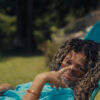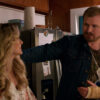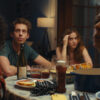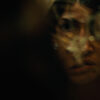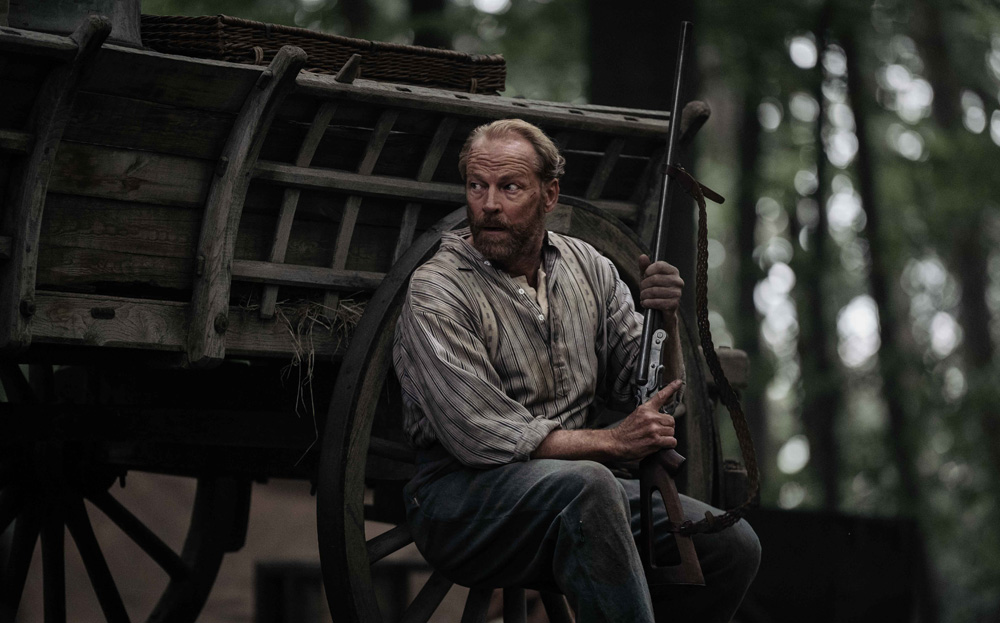When Julien Hayet-Kerknawi started down the road that would lead to “The Last Front” eight years ago, he couldn’t have known he’d end up sharing something in common with Leonard (Iain Glen), the farmer in rural Belgium at the center of his World War I-set drama. Pulled into a conflict he doesn’t want to engage in when beckoned to defend his entire village from the German troops marching in on their way to France, the respected elder in the community is forced to take a stand and as the considerably younger Hayet-Kerknawi embarked on filmmaking at a scale unusual in his home country, he might’ve felt like he was fighting some of the same battles, not giving into apathy over a long haul and protecting his vision at all costs.
It’s how Hayet-Kerknawi ended up making more than a film with “The Last Front,” which will also serve to launch a distribution company Enigma Releasing that he started with his sister Virginie Hayet with the goal of bringing more Belgian films to America, and he couldn’t have started it with any bigger bang than the tinderbox thriller. Watching as Leonard is lured into action from a quiet life raising his daughter Johanna (Emma Dupont) and son Adrien (James Downie) alone after the death of his wife, with no greater concern than worrying the latter may be setting himself up for trouble as he courts someone (Sasha Luss) from a more well-to-do family, Hayet-Kerknawi shows considerable muscle himself as the film spares no expense when it comes to suspenseful setpieces but shows just as much ambition as a survey of society at the time as the threat to the small town’s way of life brings about different fears for people of different social stations and Leonard’s own relationship with his son is seen in parallel with the commanding officer of the German troops (Philippe Brenninkmeyer) whose own son (Joe Anderson) is a bit of a loose cannon in the rank beneath him.
Finding the tension between war and peace at every level of the world “The Last Front” operates in, Hayet-Kerknawi clearly knows how big things can start out small after setting about expanding his 2015 short “A Broken Man” into a feature and now that the result will be on big screens well beyond his native Belgium, he spoke about how he took on the epic period piece, filming without the safety net of a lot of coverage and the small moments he came to appreciate most.
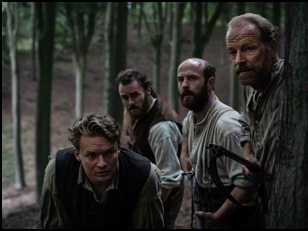
Since I was a kid, I was very interested in spectacle filmmaking and I made the short from “A Broken Man” by searching for an emotional sincerity, setting it in Belgium, the country where I live, [during] World War I. As a short film, you’re writing for a story that’s only 12 or 15 minutes long, so what happens to that character is more of a fatalistic approach to life. He learns to deal with the cards that are being presented to him and he [becomes] a broken man, but [thinking about the feature] “The Last Front,” I had more vigor to tell the story of a hero’s journey, so it’s the same character, but it goes from the direction of giving up and accepting to “now we fight.” And the story evolved [from] when I started writing in 2016.
The first title of the film was “Rage,” and when I read back the first draft from 2016, the structure and the character dynamics of those four major characters — a father and a son on the German side, a father and a son on the Belgian side, and those sides clashing into each other — that was the same. But what really evolved over time was finding this new extra character to find [more] dimension and little nuances in how one situation affects the other [between the fathers and sons], and that snowballed in “The Last Front” to that final battle where there’s too much tension. So I’m very emotional looking back that this is coming to an end after eight years. I’m going to miss this movie a lot.
In terms of adapting the short to the feature, Leonard is disapproving of the relationship between Adrien and his girlfriend Louise in the short, but in the feature, you learn that that’s partly because of the class situation. In expanding this to feature-length, you really show the social strata of Belgian society at that time. Was that exciting to develop?
Yeah, that was actually one of the most fun elements, going back through several iterations of the film because it starts out as a simple revenge, “guy with a gun” type of movie, but throughout the writing, I started exploring different little facets of society and spending time with the side characters in order to create how the world must have looked like, so when you see the world, it’s believable. This little village is a world by itself. It could be everywhere.You could adapt “The Last Front” to the American Civil War or put it to the 19th century conflict in Japan, like “The Last Samurai,” it would still feel believable. So there is local culture, but there is also broad archetypical cultural elements in it that transcend cultural limits and boundaries. That’s why I made the movie in English also.
But we also didn’t go too far into [the Belgian culture of the time]. I wanted to tell [the story] from a very archetypical type of way. You have the farmer, you have the son, you have the girl, you have the rich doctor, you have the Obi-Wan Kenobi-type character [with] the priest, and the visuals of it, even as a child, you have to understand the visual language, [like you] see the man telling everybody to stop. You feel it in a very simple way and war starts breaking out after 50 minutes in this film.
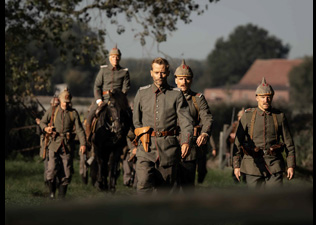
Beautiful and madness. We shot the film across the Northern side of Belgium in Flemish little villages about 35 minutes of driving from each other and it’s protected heritage, so the locations we shot looked exactly like they did a hundred years ago and people fought [there] during World War I. What I really wanted to accomplish is to have the whole film take place [in the same place] – the first 30 minutes is a farmer’s movie, then it’s a closed-quarter type combat movie and then becomes this “Lord of the Rings”-type, “we’ve got to flee from nature” vibe to it. That was very important because by focusing on fighting in little villages, you give a very fresh [feel], especially with the medieval-type elements like horses and swords instead of tanks and planes. It gave the movie a very fresh perspective to World War I. We wanted to stay away from those trenches, and I think it’s working because I look on YouTube [now for reactions to the trailer], and people are saying, “It’s probably 19th century,” which is really cool because “No, this is how World War I started,” and if audiences really want to immerse themselves into a full experience, I would recommend watching “The Last Front” and afterwards, an incredible World War I picture that takes place at the end of that war so that you really see how that world evolved over four years.
You’ve said that the balance of nature with war was really important to you. What was it like to strike that balance?
I was always a dreamer, fascinated by little natural occurrences, and from when I was a child, I had trouble focusing on things that one might say are serious and might be distracted by something that looks as something very unimportant. But in my brain, the unimportant becomes actually the only essential and I’m blessed that I was able to communicate this feeling through filmmaking at least once in my life to really show that personal approach to how I see life.
There’s some very interesting little moments [in “The Last Front”] that I’m proud of, where I try to downplay the severity of what’s written for what’s felt in the moment itself. Like when [Leonard] goes to the tree to tell [Louise] to get away and he gives his son a hard time, it’s shot under this falling sun and there’s this huge tree, it’s like Kubrickian perfection. When you put a matte filter on it, it hits all cylinders and I thought, “Look, this is interesting. I got zero coverage of the close-ups and I don’t have the medium [shots] or the closeups or the trackers. I just have the wide and it is at night, so you’re barely seeing seeing their faces, you’re with the tree. And I really wanted to stick to just exploring that, like there’s something important, but then it’s not important because it’s being downplayed and it’s not done in this exaggerated obnoxious [way]. It’s like a 10 second moment and you miss it, but nature is the thing I respect the most in life.
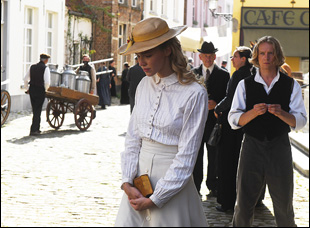
Everything was very well planned out and shot-listed, which is why we were able to shoot the film in 30 days — and I still cannot believe how that worked. We always wanted to play along with the light and how the beauty of the light would affect our characters in our scenes, so we spent a lot of time really getting to know our locations and staying flexible to changing where setups would take place in order to find something that is the most naturally beautiful in its simplicity, but that also brings a lot of challenges. We [then] had a very big challenge of finding the rhythm of the film in [the edit] because when you shoot all natural, you can’t have 30 shots in a scene. You can only do eight, so how do you keep up the tempo in the edit when you only have eight shots? I’m actually very surprised that we didn’t lose track of ourselves when we were shooting because we spent a lot of time in finding little moments of energy. I like the opening shot in our trailer of the running feet — you see a lot of running feet in this film. Or bricks. There’s a lot of concrete in this movie, like brick walls, which I really love because it’s such a stark contrast with the beginning of the film [out on the farm].
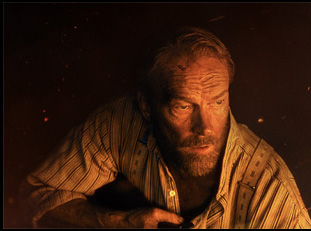
I really wanted to protect the theatrical window for my film because I really think it deserves to be seen on biggest possible screen that you can find, especially because it’s done in Dolby Atmos, and it’s done with such great care. You’re being immersed [into this experience] by great actors in a very, very tense and suspenseful conflict in a setting that for American audiences will be out of this world. It’s like for me visiting New York city for the first time, so you really have to see it on the big screen. It really deserves that experience.
I loved every part of [making this film], even the parts that were very hard and that really might’ve also hurt me because it’s very hard to focus for eight years on something. That also hurts me because I really, really care about this movie so much and in a couple weeks, it’ll all be over. But that’s why I also started Enigma. I want to protect [the movie experience]. Something I noticed even recently is how many people are in nostalgic for the past, even [relatively recently] like the 2000s or 1990s when you see something like “Stranger Things” that’s a nostalgia trip for everybody that’s so nice and I think the greatest challenge that I personally will undertake is trying to hopefully contribute something to modern culture. Not throwbacks to past culture, but to modern culture and to the future, so that’s what I hope Enigma will be about. I’m going to turn 30 in two weeks. and I think I’m going to be spending my thirties doing Enigma and hopefully some other movies [of my own], if I’m so lucky.
“The Last Front” opens in theaters on August 9th. Your local theater can be found here.
